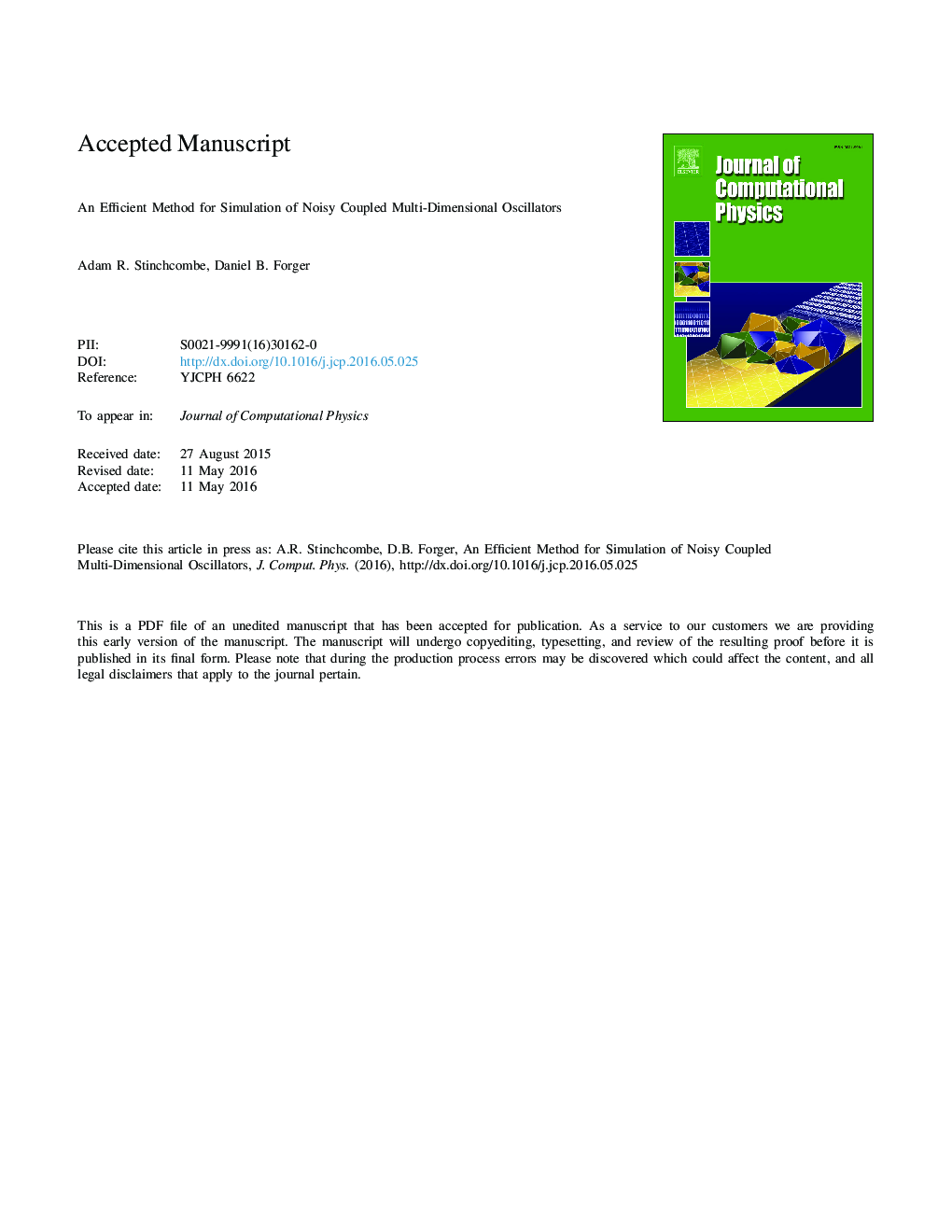| Article ID | Journal | Published Year | Pages | File Type |
|---|---|---|---|---|
| 6929847 | Journal of Computational Physics | 2016 | 43 Pages |
Abstract
We present an efficient computational method for the study of populations of noisy coupled oscillators. By taking a population density approach in which the probability density of observing an oscillator at a point of state space is the primary variable instead of the states of all of the oscillators, we are able to seamlessly account for intrinsic noise within the oscillators and global coupling within the population. The population is assumed to consist of a large number of oscillators so that the noise process is well sampled over the population. Our numerical method is able to solve the governing equation even in the challenging case of limit cycle oscillators with a large number of state variables. Instead of simulating a prohibitive number of oscillators, our particle method simulates relatively few particles allowing for the efficient solution of the governing equation.
Related Topics
Physical Sciences and Engineering
Computer Science
Computer Science Applications
Authors
Adam R. Stinchcombe, Daniel B. Forger,
